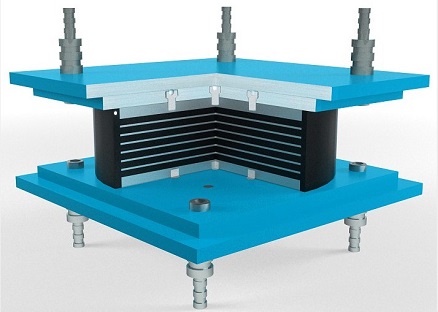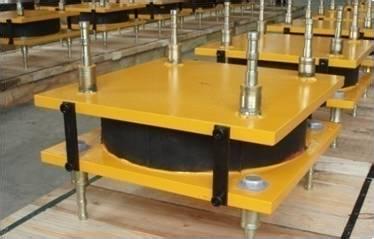How to distinguish whether bridge rubber bearings have seismic isolation performance in bridge construction, or ordinary rubber bearings?
How does the bridge construction company distinguish whether the rubber bearings used in the bridge design documents are seismic isolation rubber bearings or ordinary laminated bearings to comply with procurement and customer requirements?
Firstly, there are many differences in the use of isolation rubber bearings and ordinary elastomeric bearings, which are reflected in their different compositions, purposes, and bearing characteristics; Secondly, in terms of design parameter requirements, it can be clearly seen that the rubber bearings used are isolation rubber bearings or ordinary plate bearings, which are reflected in the different material parameter requirements and the different requirements for the performance of the finished product,
Of course, if it is a lead core rubber bearing(LRB), we can directly determine that it is a rubber isolation bearing. In the absence of a lead core, we can first judge from the parameters and performance characteristics


1. The main distinguishing methods between isolation rubber bearings and ordinary rubber bearings in design documents
The specific parameter requirements differ as shown in the table below,
Bridge bearing type | REQUESTED TECHNICAL PARAMETERS FOR DESIGNING AND TESTING | ||||||||
Rubber bearing pad | Vertical loading | Horizontal force | Compressive modulus of elasticity | Shape factor | |||||
Seismic isolation | Vertical loading | Horizontal force | Compressive modulus of elasticity | Displacement 240%-400% | yield force | Damping rate | Vertaical stiffness | Horizontal stiffness | Testing type |
2. Different compositions
Isolation rubber bearings are composed of a base, isolation body, and upper bearing plate. The isolation body is the core of the entire structure, which can effectively isolate seismic waves and protect the structure from damage. Plate type rubber bearings are composed of upper and lower plate surfaces and a middle isolation layer, with the isolation layer generally made of rubber material to provide cushioning, sound insulation, and support.
3 Different uses
Isolation rubber bearings are mainly used in large buildings, bridges, and rail transit fields. They have strong buffering and isolation capabilities, mainly to resist external loads such as earthquakes and wind loads, ensuring that the structure is not damaged. laminated rubber bearings are mainly used in smaller buildings, bridges, sidewalks, underground garages, and other situations. They are mainly used to provide support and cushioning, making buildings or facilities more stable and stable.
4. Different characteristics
The main characteristics of isolation rubber bearings are good isolation effect, strong bearing capacity, long service life, etc. At the same time, they also have a certain degree of stiffness and can effectively resist external horizontal loads. bridge rubber bearings, on the other hand, have the characteristics of large compression deformation, high shear strength, and convenient construction. They can not only support buildings and facilities, but also play a relaxing role and bear slight displacement of the structure upwards.
Summary of the differences between isolation rubber bearings and plate rubber bearings
Seismic Isolation rubber bearings and normal bridge rubber bearing pads are both rubber products used to support structures in buildings or bridges. As an important type of support structure in buildings and bridges, their common feature is that they can reduce vibration, provide sound insulation, and protect the structure to improve its durability and service life. Although both are made of rubber materials, they still have certain differences in structure and use. Isolation rubber bearings are mainly used in large buildings and bridges to cope with complex external loads, and have high isolation efficiency; Plate rubber bearings are mainly used for supporting smaller buildings and facilities, providing flexibility and reliability assurance